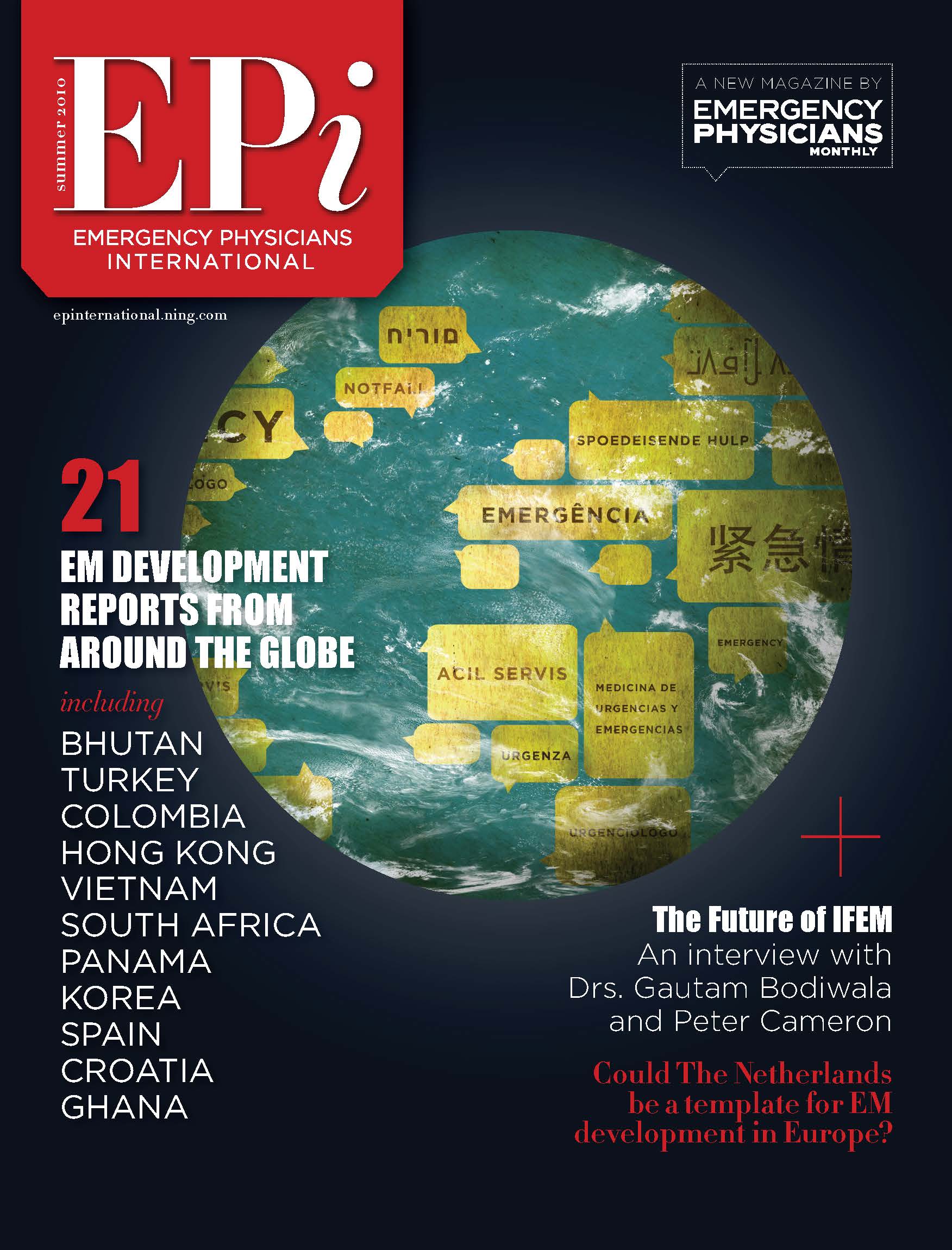Mass Casualty Incident During Pandemic : Train Collision in Kuala Lumpur
During this Covid-19 pandemic, hospitals in Malaysia are struggling to place Covid patients on a daily basis. On 24th May 2021, I arrived for work at 10 pm to take over the work shift at Hospital Kuala Lumpur (HKL's) Emergency Department. I was caught by surprise upon being told that there was a collision between two light rapid transit (LRT), in an incident on the Kelana Jaya route in a tunnel near KLCC.
The train was carrying 213 passengers. There were three emergency physicians on the evening shift : Dr Liana, Dr Azman, and Dr Khairul Izwan. I was informed that the incident happened at 8:33 pm.
About half an hour before I walked in, Dr Liana received three critical patients arriving at the same time. 5 minutes later, 12 ambulances arrived at the same time. Dr Liana immediately contacted our Head of Department, Dr Mahathar Abdul Wahab and anxiously reported the situation.
′′Take a deep breath...," Dr Mahathar tried to calm Dr Liana down as she was almost caught breathless trying to tell him about the calamity. He listened to every word and was told that the Call Centre informed that there were 47 victims.
From Dr Mahathar's calculation, by optimizing staff, we could still accommodate patients as long as the capacity did not exceed 50 people. With this specific, calculated need, we feared the possibility of patients being sent to the wrong hospitals.
Inspecting the list of patients and management plans
For example, patients with brain injuries should not be taken to hospitals without neurosurgeons. So, he decided to instruct that all cases be accepted by HKL. If the victim is more than 50, we would 'share' the burden of the patient with other hospitals. This is what we had done in the past.
At 'ground zero', there were already more than 10 ambulances from the Malaysian Civil Defence, Fire and Rescue ambulance teams, St John's Ambulance Malaysia team, and an ambulance team from our own hospital.
When I got to work, I knew that the first thing to do was understand the situation. I went around the department, assessing the situation and got the full information from our Medical Emergency Call Centre, among other personnel.
After getting all the information, I started to think about placement of patients in every treatment zone. We had to expand every zone.
I did a simple briefing in the red zone and yellow zones that were not involved with the management of Covid cases. In the past, when we had Covid, we did discuss handling such a mass casualty incident in our department. So, I already had some idea of how to get this done.
All evening shift officers were immediately ordered not to go home. They were asked to stay and join the night team. Throughout the hospital, you could hear:
′′ Supervisors, open canvas beds in all expanded zones. Team leader, distribute all staff to take patients. Sister, use special color tags to separate incident patients and other patients. Please list all incident patient names on the whiteboard."
I knew all those evening shift officers were exhausted because it was time for them to go home, but they appeared very eager to continue working. Not a single face I saw showed disappointment. In fact, they were rearing to go at the word 'go'. I was proud of them.
I was lucky because besides the three specialists who were there, there were other specialists too who came from home - Dr Ibrahim, Dr Rathini, Dr Hafiz and Dr Amira arrived. There was even another emergency physician from Hospital Sungai Buloh, Dr Shah Jahan, who joined in.
′′ My house is near," he said smilingly.
The specialists were divided to work with those different from the rest of our team.
Our department head, Datuk Dr Mahathar arrived shortly afterwards and began monitoring all patients' care. Our hearts felt relief when we saw our director, Dr Dr. Heric Coray was already there, standing at the door of our resuscitation zone.
Coordinating responses at the emergency department
While Dr Mahathar quickly and thoroughly examined patients, I updated Datuk Heric with information on the incident.
He was very helpful, and all along supportive. He gave instruction to our bed managers to accommodate additional patients that require admissions. He did not interfere with our work and not once demanded attention from us. Nevertheless, I know that his mind was spinning, thinking of any ways that could make our job easier.
I told him, "Dr, we have 42 patients in the green zone and they are all queing up for X-Rays in the emergency department. If we can get the radiologists to open their X-Ray department, we can send those who can walk there and speed up all X-Rays."
He immediately took his phone out and called the head of the Radiology Department, Dr Shantini. Dr Shantini agreed and instructed the chief radiographer on duty, Puan Zaidah to assist. I informed Dr Amira and she rounded up all patients in the green zone who could walk. 19 of them were sent with our attendant to the X-Ray department. Things went fast.
At the same time, neurosurgeons, anesthesiologists and Orthopedics specialists also came down and surgery decisions or admissions could be made very quickly after patients were already stabilized by our team.
With a strength of two shifts of staff, totaling around 400 people, all our Medical Officers, Assistant Medical Officers, Nurses and Healthcare Assistants were working fast and non-stop.
I observed our contract Medical Officers and Housemen battling on despite being tired, having worked all day long. In my heart, I was thinking, "They are more than qualified to be given permanent positions and not just a contract." I hoped the Department of Public Services and the Finance Ministry could plan well for them to be given these posts.
While all this was unfolding, Covid as well as non-Covid patients who were still in our department were being treated as usual.
By 12.00 midnight, as many as 67 patients were already in our department. Our teams worked very efficiently.
At 'ground zero', all prehospital response works came to an end, as there were no more patients. There was an official stand down at 11.37 pm.
The nursing team had prepared beds in the hospital for all who needed attention in the ICU Ward. Out of 67 patients, 6 were critical, 19 were semi-critical, and 42 others were non-critical.
We also needed to check everyone’s body temperatures to ensure they did not have symptoms of Covid, while providing other treatment. For every patient requiring ward admission, an RTK antigen test or a Genexpert PCR test were carried out to detect Covid-19 patients. Thankfully, all patients tested negative for the virus.
Finally, by 1 am, all patients had complete examinations with a clear plan for management. From the initial chaos, we had complete order. There seemed to be no more need to retain our tired evening staff. At 1.25 am, we all had a debriefing session.
Our staff handling Covid patients at our 'dirty resuscitation zone'
All of us were happy that this incident was dealt with effectively and efficiently. We took care to thank all who cooperated. We relieved all our evening shift staff, as well as others who came from home. Dr Mahathar thanked all the officers and officially declared the final stand down at 1.38 am.
As I was on duty, I carried on after that. Our resuscitation 'bells' kept ringing, indicating the arrival of Covid patients that our team had to handle. I had to decide to intubate two patients, as they appeared to be in bad condition. We also had patients who were high on drugs having bad asthmatic attacks, as well as pneumonia along the way. This expected level of chaos continued till daylight.
Disasters such as this will never choose the most convenient time for us. In the line of duty while working in the emergency department, just like patients, they do not come at a scheduled time, fixed place or determined magnitude. Regardless of whatever form of crises, one must always be calm, rational, patient and unite everyone to be one in solving every problem.
It helps that when one sees the gap, rather than complaining about the gap, our team bridges it in the most clear, effective way possible. If all devote their energy to bridge each gap, we can weather any storm.
That is what we experienced together, in the emergency department that night.










